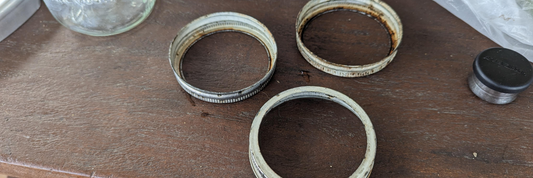Bubble wrap is a staple in the packaging world, known for its lightweight yet effective cushioning properties. However, not all bubble wrap is created equal. Different sizes of bubbles serve specific purposes, and understanding these sizes can help businesses make informed purchasing decisions, especially for bulk orders. In this article, we’ll break down the various bubble wrap sizes—small, medium, and large—and provide insights into their best uses for packaging.
- What is Bubble Wrap? Bubble Wrap Applications
- Foam vs. Bubble Wrap: Which Is Better for Packaging?
- Anti-Static Bubble Wrap: What It Is and When to Use It
-
What Is Crinkle Paper? Types of Crinkle Paper Used For Packaging & Shipping
Why Choosing the Right Bubble Wrap Size Matters?
Selecting the right size of bubble wrap is crucial for protecting items during shipping or storage. Using the wrong size can lead to inadequate protection or wasted material, both of which can impact shipping costs and customer satisfaction. Each bubble size is tailored for specific applications, ranging from protecting delicate items to filling empty spaces in large boxes.
Key Benefits of Choosing the Right Bubble Wrap Size:
- Improved Protection: Prevents breakage and damage to fragile items.
- Cost-Effective: Saves on material and shipping costs.
- Efficient Packing: Allows for optimal space usage in packaging.

Types of Bubble Wrap Sizes
Small Bubble Wrap (3/16-inch diameter)
Small bubble wrap has the smallest bubbles, typically with a diameter of around 3/16 of an inch (4.8 mm). This size is best suited for delicate items that require precise cushioning without adding too much bulk to the packaging. Small bubble wrap is often used for wrapping individual items before placing them in a box.
Best Uses for Small Bubble Wrap:
- Electronics: Ideal for smartphones, tablets, cameras, and other electronic devices that need extra cushioning against vibrations and minor impacts.
- Glassware and Ceramics: Provides excellent protection for fragile items like drinking glasses, vases, and ceramic figurines.
- Books and Printed Material: Wraps books and artwork for protection without taking up excessive space.
Advantages:
- Offers tight, precise cushioning.
- Suitable for wrapping items directly without additional padding.
- Lightweight and won’t add unnecessary weight to shipments.

Medium Bubble Wrap (5/16-inch diameter)
Medium bubble wrap has bubbles with a diameter of 5/16 of an inch (8 mm). This size offers a balance between cushioning and filling voids. It's a versatile option used for general packaging purposes, particularly for moderately fragile items or those that need more padding than what small bubbles provide.
Best Uses for Medium Bubble Wrap:
- Home Décor Items: Ideal for protecting items like picture frames, small lamps, and decorative pieces.
- Kitchen Appliances: Used to wrap blenders, toasters, and other kitchen gadgets during shipping.
- Medium-sized Electronics: Provides enough protection for items like laptops or gaming consoles.
Advantages:
- Versatile and can be used for a wide variety of items.
- Offers moderate protection without adding too much bulk.
- Effective for protecting both fragile and non-fragile items.

Large Bubble Wrap (1/2-inch diameter)
Large bubble wrap features bubbles with a 1/2-inch (12.7 mm) diameter and offers the most cushioning and protection. The large air pockets create a thick padding that is ideal for shipping bulky and heavy items. This type is commonly used to fill void spaces in large boxes to prevent items from shifting during transit.
Best Uses for Large Bubble Wrap:
- Furniture and Large Appliances: Protects larger items like chairs, refrigerators, and washing machines from damage.
- Fragile Art Pieces: Provides superior cushioning for larger, more delicate objects such as sculptures and large paintings.
- Void Fill: Excellent for filling gaps in large boxes to prevent items from moving around during shipping.
Advantages:
- Provides the highest level of cushioning and shock absorption.
- Best for large, heavy, or highly fragile items.
- Can be used for void fill in large boxes, reducing the need for additional packing materials.

Factors to Consider When Choosing Bubble Wrap Size
When choosing the right bubble wrap size for your packaging needs, consider the following factors:
- Item Fragility: More delicate items require smaller bubbles for closer protection, while heavier or bulkier items benefit from larger bubbles.
- Package Size: Small bubble wrap is ideal for compact packaging, while large bubble wrap is better suited for filling larger spaces.
- Shipping Distance: For long-distance shipping, items are more likely to experience rough handling, making medium or large bubbles a better choice for added protection.
- Weight of Items: Heavier items may require large bubble wrap to prevent them from breaking or moving during transit.
Additional Bubble Wrap Features to Consider
While bubble size is the most important factor, businesses should also consider other characteristics of bubble wrap that can enhance protection:
- Anti-Static Bubble Wrap: Used primarily for electronics, this type of bubble wrap prevents static electricity buildup, protecting sensitive items from potential damage.
- Self-Adhesive Bubble Wrap: Comes with an adhesive side that sticks to items, making it easier to wrap and reducing the need for tape.
- Perforated Bubble Wrap: Comes in pre-perforated sheets, allowing for easier, more precise tearing and wrapping.
FAQs: Common Questions About Bubble Wrap Sizes
What Size Bubble Wrap Should I Use For Shipping Fragile Items?
For small, fragile items like glassware and electronics, small bubble wrap (3/16-inch) is ideal. For larger, delicate items, medium or large bubble wrap can provide better protection.
Can Large Bubble Wrap Be Used For Small Items?
Large bubble wrap is generally too bulky for small items. It is better suited for larger or heavier items, as well as for filling voids in larger packages.
How Does Bubble Size Impact Shipping Costs?
Smaller bubbles take up less space, reducing the overall weight and size of the package, which can lower shipping costs. Large bubbles, while offering more protection, may increase the dimensions of the package.
What Is Anti-Static Bubble Wrap Used For?
Anti-static bubble wrap is used to package sensitive electronics, as it prevents static electricity from damaging the components.
How Long Does Bubble Wrap Last?
Bubble wrap can last for years when stored properly. However, it may lose some of its cushioning properties if exposed to prolonged sunlight or high temperatures.
Conclusion
Selecting the right bubble wrap sizes can make a significant difference in how well your items are protected during shipping and storage. Small bubble wrap offers precise protection for delicate items, medium-sized bubbles strike a balance between cushioning and space, and large bubbles are perfect for bulky or heavy objects. By understanding the unique benefits of each size, businesses can optimize their packaging strategies, reduce costs, and ensure their products reach customers in perfect condition.









